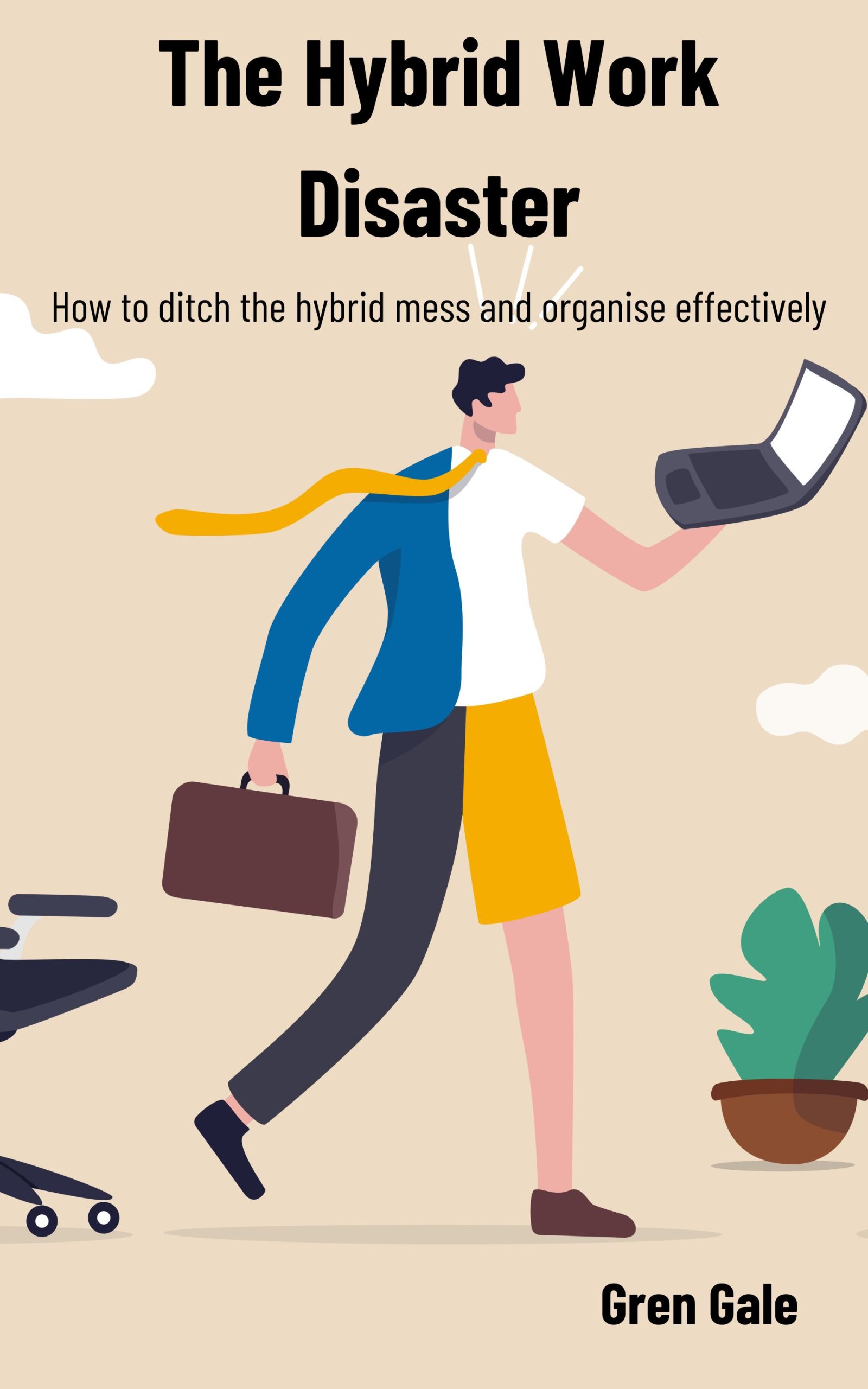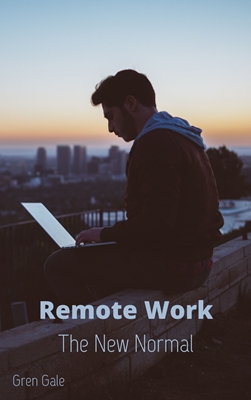It’s hard to understand the rationale for an increasing number of companies issuing return to the office directives. The cheerleaders for this movement claim that offices are the best places for innovation, creativity and collaboration and often view working from home as a synonym for shirking. It’s also starting to become common for CEOs of companies in difficulty to scapegoat flexible working for their problems. An example is UK supermarket chain Asda who are struggling to service a mountain of debt from a leveraged buy-out. They recently announced lay-offs and in addition a reduction in the level of flexible working to in their words “build high performing teams with a collaborative culture”. The most disturbing aspect of this is that CEOs seem to be working completely on gut feel, disregarding or being ignorant of hard evidence that totally contradicts the reasons given for a return to the office.
Return to the office directives are based on little more than a feeling
The claim that working in an office encourages innovation and collaboration has little or no data to support it and is debunked by research going back as far as the 1950s. For any other major initiative, the CEO and Finance Director would insist on a business case that showed tangible benefits and evidenced either an increase in revenue or a decrease in costs. Return to the Office directives can show only intangible benefits based on little more than a feeling, no tangible benefits whatever and an increase in costs. In a rational world they would be thrown out as unviable.
CEOs have always distrusted remote work
I ran a home working trial for a FTSE 30 company in 2004. An office lease was running out and they wanted to fit all of the displaced staff into existing office space, saving significant rental costs. I was in charge of making this happen and decided to look at the feasibility of having staff working from home one day per week. In that long-gone era the technology to support home working was in its infancy. Broadband was available but expensive, so most participants used dial-up! Video conferencing apps didn’t exist and phones were just that, not at all smart. Despite this, staff loved it. On their day working from home they had few interruptions and no commute and this not only made them significantly more productive but also reduced their stress levels. However, when I presented the results of the trial to the company board, the CEO wasn’t at all happy. He wanted to know how I could be sure that the staff on the trial were working if I couldn’t see them and where my proof was that they were more productive, other than their say-so. I tried to argue against this, but had the feeling that his mind had been set before I started my presentation. In fact, he was so impressed with the trial that he turned to all of the other directors and told them home working was to be banned right across the company. This attitude isn’t so far from the that being shown by many CEOs right now.
Remote work has been around for a lot longer than offices

Remote work is hardly a new fad. It has been around for much longer than offices have, in fact most work we’d recognise as office work was carried out from home in the 1300 years between the fall of the Roman Empire and the establishment of the first office by the East India Company in 1729. Gitlab a computer software company established in 2011 have never owned an office with over 2,000 staff all working from home including sales, HR, marketing and accounts as well as their IT people. The UK civil service instituted hybrid working in 2017 in order to reduce office costs, something Jacob Rees-Mogg, when he was a UK cabinet minister, seemed to have ignored when he toured offices leaving notes on people’s desks saying “I look forward to seeing you in the office very soon”. There are many other examples of successful companies championing home working well before the pandemic struck in 2020 forcing companies to carry out a massive and largely successful trial of remote working, with 3 billion people worldwide taking their laptops and working from home.
Office staff are significantly more productive working from home
Return to the office apologists commonly claim that staff are more productive working in an office. This is a complete fallacy, in fact the reverse is true. Countless surveys have showed staff to be more productive working from home. While some of this is more subjective, there is significant measurable evidence to support it. Trip.com and Stanford University carried out a trial with half of a team working from home and the other half from the office. Both teams were carrying out identical, repetitive and measurable tasks. Trip.com found the team working from home were 13% more productive than the ones working from the office, so they made the move permanent after which a 22% uplift in productivity was measured. Prodoscore, a company who sell employee monitoring software, looking at 100 million data points across 30,000 users saw a remarkable 47% increase in the productivity when comparing data from spring 2019 with spring 2020 when of course all of them were working from home.
The myth that working in offices encourages creativity
 The myth that working in an office promotes creativity is another common justification for return to the office directives. However this also has been consistently proven incorrect by studies going as far back as 1958 where Yale University carried out experiments which showed exactly the reverse. Yale set creativity exercises to groups brainstorming solutions and the same exercises to individuals working alone and found that the individuals came up with twice as many feasible ideas. Keith Sawyer, a world renown psychologist who specialises in creativity stated that “Decades of research have consistently shown that brainstorming groups think of far fewer ideas than the same number of people who work alone and later pool their ideas”. Susan Cain who spent 7 years researching Introverts and writing ‘Quiet: The Power of introverts in a world that can’t stop talking’, concluded that introverts make up 30-50% of the world’s population and are some of the most creative people in society and yet their voices consistently get swamped by extroverts in the brainstorming groups that are commonly employed in most offices. These groups more often than not lead to Groupthink rather than creativity where the loudest voices tend to carry the group with them. CEOs enforcing return to the office directives are promoting the one of the worst environments for creative thinking, full of noise and interruptions and dominated by those with the loudest voices.
The myth that working in an office promotes creativity is another common justification for return to the office directives. However this also has been consistently proven incorrect by studies going as far back as 1958 where Yale University carried out experiments which showed exactly the reverse. Yale set creativity exercises to groups brainstorming solutions and the same exercises to individuals working alone and found that the individuals came up with twice as many feasible ideas. Keith Sawyer, a world renown psychologist who specialises in creativity stated that “Decades of research have consistently shown that brainstorming groups think of far fewer ideas than the same number of people who work alone and later pool their ideas”. Susan Cain who spent 7 years researching Introverts and writing ‘Quiet: The Power of introverts in a world that can’t stop talking’, concluded that introverts make up 30-50% of the world’s population and are some of the most creative people in society and yet their voices consistently get swamped by extroverts in the brainstorming groups that are commonly employed in most offices. These groups more often than not lead to Groupthink rather than creativity where the loudest voices tend to carry the group with them. CEOs enforcing return to the office directives are promoting the one of the worst environments for creative thinking, full of noise and interruptions and dominated by those with the loudest voices.
“A large percentage of people who work from home are lazy gits”
The arguments behind return to the office directives make little sense and have more to do with the fears of CEOs that if they can’t see people working they’re probably not. Lord Sugar’s X tweet that “A large percentage of people who work from home are lazy gits” is typical of this attitude. There may well be other factors at play. CEO’s spacious offices are of course status affirming and very much part of their power base. A video call or a meet up in a collaboration space tends to have the opposite effect. CEOs seem to be very comfortable imposing changes to employees’ conditions and making lay-offs to improve efficiency while seeming happy to increase costs and make poor decisions when it comes to their obsession with offices.
Conclusion
Return to the office directives are just plain wrong. I believe flexible working to be the optimum way of organising office work. Flexible work starts from the proposition that staff work from home but encourages meeting face-to-face whenever there is a reason to do so, for example bringing staff together to discuss ideas they have already generated working alone. Under flexible working staff meet for a purpose not because the rules say they have to be in an office three or more days per week. It reduces office costs and allows much more flexibility to recruit the brightest and best given there are fewer geographical restrictions for hiring. Staff are happier in a flexible work environment, are more productive and easier to retain.
About Gren Gale
Gren Gale is a consultant and speaker in Remote Work and Project Management and has been named as one of the top 19 Key Opinion Leaders globally in remote work in Who’s Who in Remote Working? and and one of the top 50 Project Management Leaders worldwide by Leaders Hum He is author of the Hybrid Work Disaster, the Remote Project Manager and Remote Work The New Normal.
Articles and reviews on this site are written from an unbiased viewpoint. We only review products which are relevant to Remote Work or Project Management and ones we believe in. Once this article on return to the office directives was written we looked to see if some of the links could generate affiliate income. It won’t make us rich but it helps pay the rent!









Recent Comments